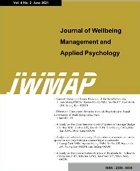- 권한신청
- E-ISSN2586-6036
- KCI
Estimation of VOCs Emissions from Small-Scale Surface Coating Facilities in Seoul
Woo-Taeg, KWON (Department of Environmental Health & Safety, Eulji University)
Abstract
Purpose: VOCs (volatile organic compounds) are all the organic compounds that react with solar rays and increase the concentration of ozone in the troposphere and are partially also known as carcinogens. The adsorption using activated carbon is usually applied to remove VOCs. Research design, data and methodology: The 20 places of surface coating facilities were selected to evaluate the emission amount of VOCs in Seoul. In addition, the removal efficiency of VOCs in 25 places of automobile coating facilities was evaluated. Results: The average emission amount of VOCs was 10.903 kg/hr from automobile coating facilities, while 3.520 kg/hr from other surface coating facilities. The removal efficiency in adsorption with the combustion catalytic process has the mean value of 87.9% and the regeneration efficiency of activated carbon has the mean value of 95.0%. Conclusions: The removal efficiency in adsorption with the biofiltration process has the mean value of 89.8% and the regeneration efficiency of activated carbon has the mean value of 94.8%. The removal efficiency in the plasma catalyst process has the mean value of 79.3%.
- keywords
- VOCs, Adsorption, Combustion Catalytic Oxidation, Biofiltration, Plasma Catalyst
- 다운로드 수
- 조회수
- 0KCI 피인용수
- 0WOS 피인용수














